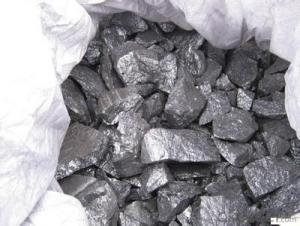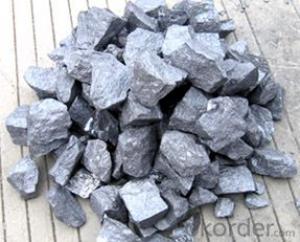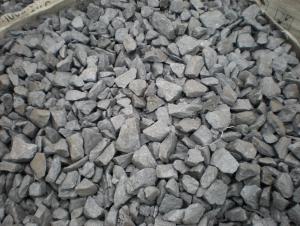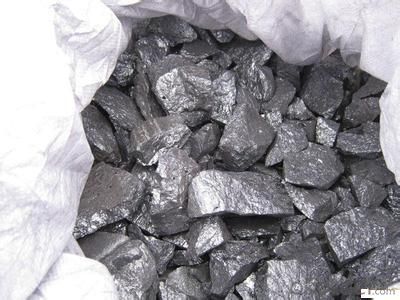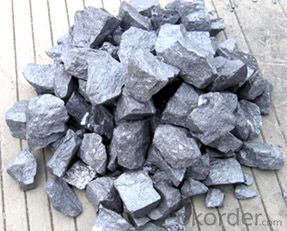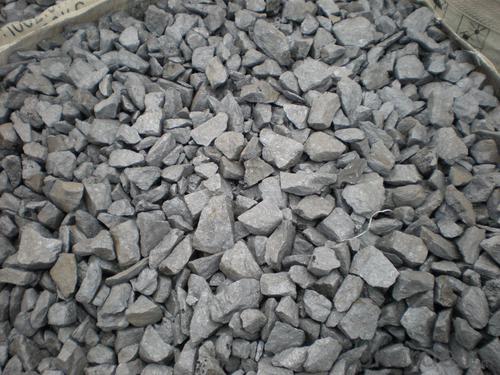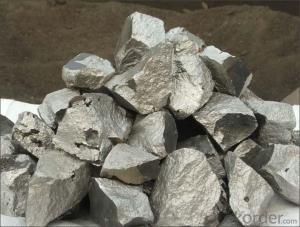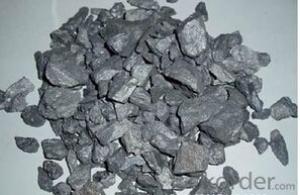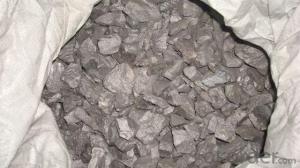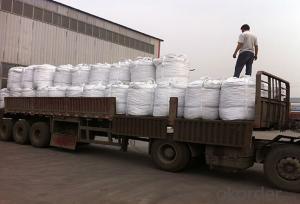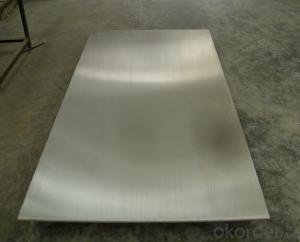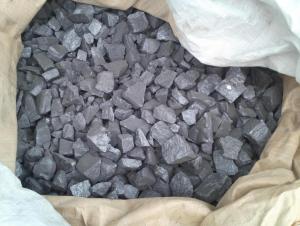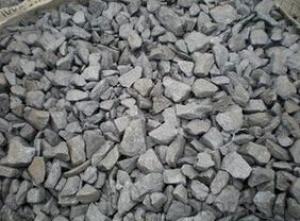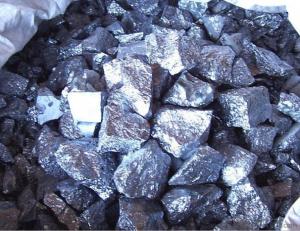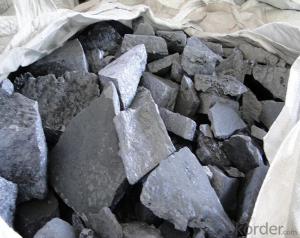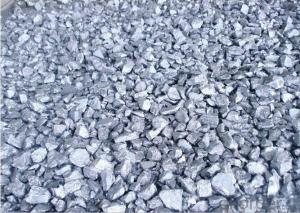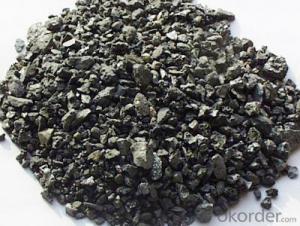FeSi75-B for Casting Manufactural and Steel Making
- Loading Port:
- Tianjin
- Payment Terms:
- TT or LC
- Min Order Qty:
- 25 m.t.
- Supply Capability:
- 150000 m.t./month
OKorder Service Pledge
OKorder Financial Service
You Might Also Like
FeSi75-B for Casting Manufactural and Steel Making
Description
Ferro Silicon is a kind of ferroalloy which is composed of ferrum and silicon. Ferro Silicon uses coke, quartz (or silica) as raw materials and is made by electric furnace. Because silicon and oxygen are easily compound into SiO2, the ferrosilicon is often used as deoxidizer in steelmaking.
Application
1. It can be used as a reductant in ferroalloy production and chemical industry.
2. In iron industry it can be used as inoculant and nodulizer.
Specification
Brand | Chemical Composition (%) | ||||||||||
Si | Al | Ca | P | S | C | Fe | |||||
<= | |||||||||||
FeSi75-A | 74.0-80.0 | 1.5 | 1 | 0.035 | 0.02 | 0.2 | Balance | ||||
FeSi75-B | 72.0-80.0 | 1.5 | 1 | 0.04 | 0.02 | 0.2 | Balance | ||||
FeSi72 | 72 | 1.5 | 1 | 0.04 | 0.02 | 0.2 | Balance | ||||
FeSi70 | 70 | 1.5 | 1 | 0.04 | 0.02 | 0.2 | Balance | ||||
FeSi65 | 65.0-72.0 | 2 | 1 | 0.04 | 0.02 | 0.2 | Balance | ||||
FeSi45 | 40.0-47.0 | 2 | 2 | 0.04 | 0.02 | 0.2 | Balance | ||||
Size:0-3mm,3-10mm,10-100mm or as the customers’ requirements
Packing: 25Kg/bag, 1MT/bag or as your requirements.
Pictures:
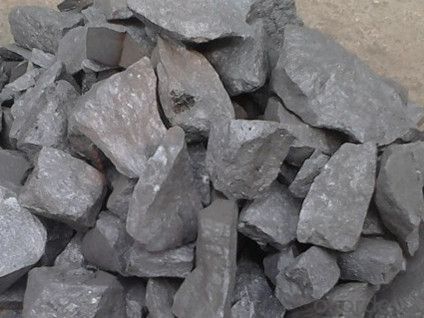
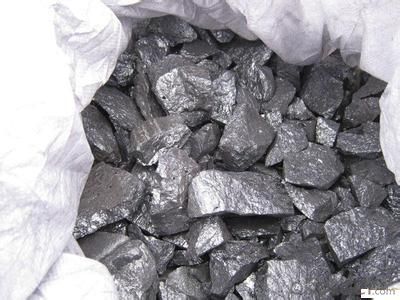
- Q: Does the hard alloy belong to the composite material?
- It's a composite material made up of dock, titanium and cobalt.
- Q: What is called cemented carbide?
- Hard alloy with high hardness, strength and toughness, good wear resistance, heat resistance, corrosion resistance and a series of excellent performance, especially high hardness and wear resistance of it, even at a temperature of 500 DEG C also remained unchanged, at 1000 degrees C still have high hardness. Hard alloy are widely used as tool materials. Such as turning, milling, planing, drilling, boring, used for cutting cast iron, non-ferrous metals, plastics, chemical fiber, graphite, glass, stone and steel, can also be used for cutting steel, stainless steel, high manganese steel, tool steel and other hard processing materials. Hundreds of times now cutting speed of new carbide tool is carbon steel.Carbide can also be used to make rock drilling tools, mining tools, drilling tools, measuring tools, wear-resistant parts, metal abrasives, cylinder liner, precision bearings, nozzles and so onIn the past twenty years, coated carbide also come out in Sweden.1969 in the successful development of titanium carbide coated tools, the tool is a matrix of tungsten carbide titanium carbide cobalt alloy or cobalt tungsten carbide, titanium carbide surface coating thickness of only a few microns, but with the same grade alloy tool compared to prolong the service life of 3 times, cutting to increase the speed of 25% ~ 50%.20 in 70s has been fourth generation coating tools, can be used for cutting hard processing materials.
- Q: Is Zhuzhou the largest cemented carbide producer in Asia?
- Of course, yes, or how could the 601 factory be so famous? That's the old military enterprise. It's the hard tool factory now. I hope it can help you!
- Q: HSS clip can clamp the hard alloy saw it
- According to S=Vc/ (pi * saw diameter).Extended introduction:product mixMonolithicThe cutter body and the cutter tooth are made into a whole.Integral welding gear typeThe tool tooth is made of hard alloy or other wear-resistant tool material and brazed to the cutter body.Inserted toothThe cutter teeth are fastened on the cutter body by mechanical clamping method. The replaceable cutter tooth can be the cutter head of the whole cutter material, or the cutter head of the welding tool material.
- Q: Hard alloy die mold grinding angle how slim
- The diamond electric grinding head can be polished, and the electric grinding head has a conical grinding head. Place the grinding head on a drill press or polish on an electric tool. Can the hard alloy die is caught in the lathe, grinding with diamond file.
- Q: How to distinguish the authenticity of Zhuzhou diamond brand cemented carbide blade?
- In fact, now only look at the packaging has been unable to identify, because now the copycat alloy packaging has really not with what two things, want to know after the authenticity can be used, you can try to buy a small amount of alloy, the quality of clearance to buy a lot, you can go to the station to find the Alibaba China @ Rui Sen # trade. Easy% Co., reputation has been good, but sales of hard alloy Zhuzhou diamond factory, there are quality problems can return shipping.
- Q: What kinds of carbide knives do you have? Write out its main functions and uses.
- (2) tungsten titanium cobalt (WC+TiC+Co) cemented carbide (YT), such as YT5, YT15, YT30 and so on.Because of the hardness and melting point of TiC is higher than WC, so compared with YG, its hardness, wear resistance, red hardness increase, bonding temperature is high, antioxidant ability is strong, and in high temperature will produce TiO 2, can reduce bonding. But the thermal conductivity is poor and the bending strength is low, so it is suitable for the processing of steel and other tough materials.
- Q: Make cutting dosage
- But modern machining, has no strict distinction between the T and G class, but in different types of processed materials and processing conditions, different ways such as the use of different materials, and with appropriate coating, to reduce the cost requirements.Cutting parameters need to be selected according to different cutting occasions and different materials to be machined.
- Q: What is the difference between the production process of ferrous powder metallurgy and cemented carbide?
- Powder metallurgy, powder metallurgy, has been in fact a long time ago. In early times, powders of gold, silver, copper and bronze were obtained by mechanical comminution and used as decorative coatings for pottery. In the second half of the eighteenth Century and the first half of nineteenth Century, countries such as Russia, England and Spain made sponge platinum particles from factories, and manufactured coins and valuable objects by hot pressing, forging and pressing, sintering and other processes.
- Q: The use of wire cutting cut a knife head rest wear found with magnetic iron absorption, cutting.
- Because when you cut the cutter, it is fixed with a magnet!
Send your message to us
FeSi75-B for Casting Manufactural and Steel Making
- Loading Port:
- Tianjin
- Payment Terms:
- TT or LC
- Min Order Qty:
- 25 m.t.
- Supply Capability:
- 150000 m.t./month
OKorder Service Pledge
OKorder Financial Service
Similar products
Hot products
Hot Searches
